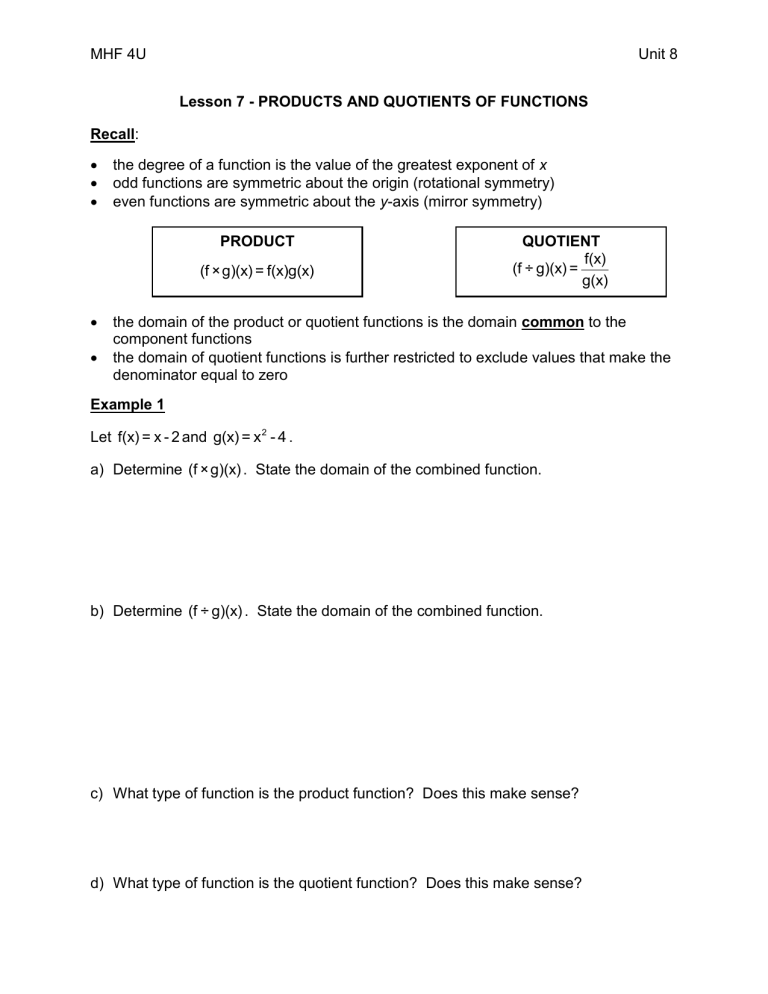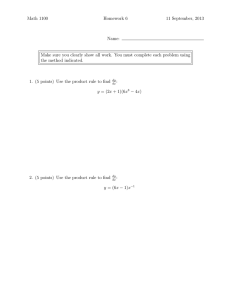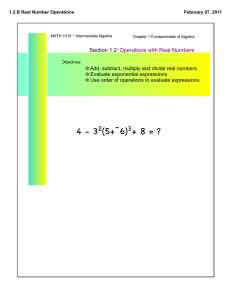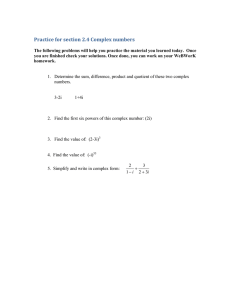MHF 4U Unit 8 x

MHF 4U Unit 8
Lesson 7 - PRODUCTS AND QUOTIENTS OF FUNCTIONS
Recall :
the degree of a function is the value of the greatest exponent of x
odd functions are symmetric about the origin (rotational symmetry)
even functions are symmetric about the y -axis (mirror symmetry)
PRODUCT
(f × g)(x) = f(x)g(x)
QUOTIENT f(x)
(f ÷ g)(x) = g(x)
the domain of the product or quotient functions is the domain common to the component functions
the domain of quotient functions is further restricted to exclude values that make the denominator equal to zero
Example 1
Let f(x) = x - 2 and . a) Determine (f × g)(x) . State the domain of the combined function. b) Determine (f ÷ g)(x) . State the domain of the combined function. c) What type of function is the product function? Does this make sense? d) What type of function is the quotient function? Does this make sense?
MHF 4U Unit 8
Example 2
In an effort to boost fan support, the owners of a baseball team have agreed to gradually reduce ticket prices, P , in dollars, according to the function P(x) = 25 - 0.1x
, where x is the number of games that have been played so far this season. Since these marketing initiatives began, the number, N , in hundreds, of fans in attendance has been modelled by the function N(x) = 10 + 0.2x
. a) Determine the function that represents the revenue from ticket sales. b) Will the owners increase or decrease their revenue from ticket sales under their current marketing plan? Explain.








